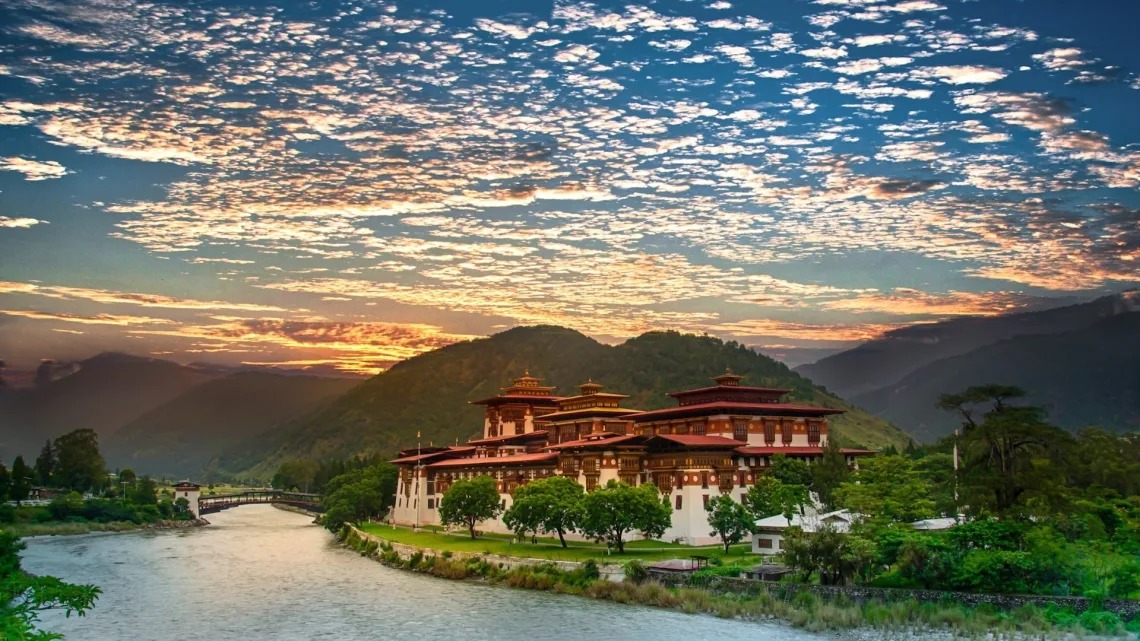Bhutan, the enchanting Himalayan kingdom, is redefining its tourism landscape with a renewed focus on sustainability, cultural preservation, and immersive guest experiences. As the world’s first carbon-negative country, Bhutan has long been a symbol of harmony between development and environmental stewardship. With its borders now open to unlimited tourists and a revamped tourism strategy in place, Bhutan is set to welcome travelers to explore its breathtaking landscapes and rich heritage. Here are the key highlights of Bhutan's new tourism chapter:
Key Highlights
1. Sustainable Tourism at the Core
Bhutan has replaced its traditional "Minimum Daily Tariff" with a revised Sustainable Development Fee (SDF) of USD 100 per person per night. This fee supports environmental conservation, cultural preservation, and infrastructure development.
The SDF reflects Bhutan's commitment to its "High Value, Low Impact" tourism policy, ensuring that tourism benefits both the local community and the environment.
2. Infrastructure Upgrades for an Enhanced Experience
During the COVID-19 shutdown, Bhutan invested in upgrading roads, trails, temples, and public facilities.
Tourism service providers, including guides and operators, underwent upskilling programs to enhance service quality.
A newly launched online portal now allows tourists to plan trips independently by booking licensed guides, accommodations, and transport services.
3. A Focus on Cultural Preservation
Bhutan’s tourism strategy emphasizes preserving its unique cultural identity through initiatives such as restoring historical sites like the Wangduechhoeling Palace, set to reopen in 2025 after a decade-long restoration.
Visitors can immerse themselves in Bhutanese traditions through curated experiences like prayer flag-making workshops and wellness retreats.
4. Accessibility Made Easier
New flight routes from Dubai to Paro have improved connectivity for international travelers.
Indian tourists continue to enjoy reduced SDF rates at INR 1200 per night, making Bhutan an attractive destination for regional visitors.
5. Diverse Experiences for Every Traveler
Popular itineraries include exploring the "Golden Triangle" of Paro (home to Tiger’s Nest Monastery), Thimphu (the capital), and Punakha (the ancient capital).
Longer stays offer opportunities to venture into lesser-known regions like Bumthang Valley, the cultural heart of Bhutan.
6. A Commitment to Carbon Neutrality
Bhutan remains steadfast in its mission to maintain its carbon-negative status by limiting environmental impact through sustainable practices.
Tourists are encouraged to embrace eco-friendly travel habits during their stay.
Why Visit Bhutan Now?
Unparalleled Natural Beauty
Bhutan offers pristine landscapes ranging from snow-capped peaks to lush valleys. Adventure enthusiasts can trek historic routes or raft through Punakha’s rivers, while nature lovers can explore biodiversity-rich forests.
Rich Cultural Heritage
Bhutan’s monasteries, dzongs (fortresses), and festivals provide a glimpse into its deeply spiritual culture. Visitors can witness traditional dances during festivals or participate in meditative retreats.
Exclusive Travel Experience
Bhutan’s low tourist volume ensures an intimate travel experience free from overcrowding. The new tourism policies aim to attract mindful travelers who value quality over quantity.
Challenges Ahead
Despite these advancements, Bhutan faces challenges such as balancing economic growth with sustainability goals. The high SDF may deter budget travelers, but it aligns with Bhutan’s vision of attracting responsible tourists who appreciate its values.
Conclusion
Bhutan is not just a destination; it is an experience that transforms visitors while preserving its natural and cultural treasures for generations to come. With its renewed focus on sustainability and guest satisfaction, Bhutan invites travelers from around the world to unlock its wonders and embark on a journey of discovery.
Sources: Tusk Travel Blog, Travel Trade Journal, Economic Times
